What are you looking for at Aqrani library?
-

Victor Hugo
Victor Marie Hugo (26 February 1802 – 22 May 1885) was a French poet, novelist, and dramatist of the Romantic movement. During a literary career that spanned more than sixty years, he wrote abundantly in an exceptional variety of genres: lyrics, satires, epics, philosophical poems, epigrams, novels, history, critical essays, political speeches, funeral orations, diaries, letters public and private, and dramas in verse and prose.Hugo is considered to be one of the greatest and best-known French writers. Outside France, his most famous works are the novels Les Misérables, 1862, and The Hunchback of Notre-Dame (French: Notre-Dame de Paris), 1831. In France, Hugo is renowned for his poetry collections, such as Les Contemplations (The Contemplations) and La Légende des siècles (The Legend of the Ages). Hugo was at the forefront of the Romantic literary movement with his play Cromwell and drama Hernani. Many of his works have inspired music, both during his lifetime and after his death, including the musicals Les Misérables and Notre-Dame de Paris. He produced more than 4,000 drawings in his lifetime, and campaigned for social causes such as the abolition of capital punishment.Though a committed royalist when he was young, Hugo's views changed as the decades passed, and he became a passionate supporter of republicanism, his work touched upon most of the political and social issues and the artistic trends of his time. His opposition to absolutism and his colossal literary achievement established him as a national hero. He was honoured by interment in the Panthéon. Hugo's death from pneumonia on 22 May 1885, at the age of 83.
-
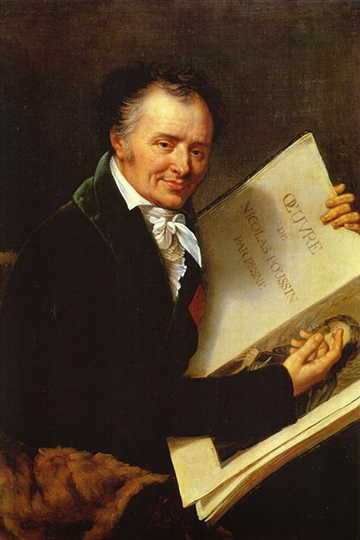
Vivant Denon
Dominique Vivant, Baron Denon (4 January 1747 – 27 April 1825) was a French artist, writer, diplomat, author, and archaeologist. He was appointed as the first Director of the Louvre museum by Napoleon after the Egyptian campaign of 1798–1801, and is commemorated in the Denon Wing of the modern museum and in the Dominique-Vivant Denon Research Center.[1] His two-volume Voyage dans la basse et la haute Egypte ("Journey in Lower and Upper Egypt"), 1802, was the foundation of modern Egyptology. He was sent to Paris to study law, but he showed a decided preference for art and literature, and soon gave up his profession. In his twenty-third year he produced a comedy, Le Bon Pére, which obtained a succès d'estime, as he had already won a position in society by his agreeable manners and exceptional conversational powers. He became a favorite of Louis XV, who entrusted him with the collection and arrangement of a cabinet of medals and antique gems for Madame de Pompadour, and subsequently appointed him attaché to the French embassy at St. Petersburg.
-
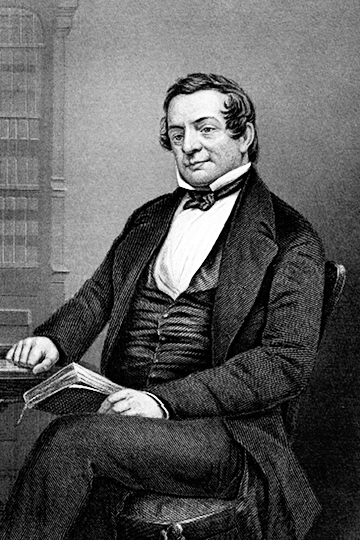
Washington Irving
Washington Irving (April 3, 1783 – November 28, 1859) was an American short-story writer, essayist, biographer, historian, and diplomat of the early 19th century. He is best known for his short stories "Rip Van Winkle" (1819) and "The Legend of Sleepy Hollow" (1820), both of which appear in his collection The Sketch Book of Geoffrey Crayon, Gent. His historical works include biographies of Oliver Goldsmith, Muhammad and George Washington, as well as several histories of 15th-century Spain that deal with subjects such as Alhambra, Christopher Columbus and the Moors. Irving served as American ambassador to Spain in the 1840s.Born and raised in Manhattan to a merchant family, Irving made his literary debut in 1802 with a series of observational letters to the Morning Chronicle, written under the pseudonym Jonathan Oldstyle. He temporarily moved to England for the family business in 1815 where he achieved fame with the publication of The Sketch Book of Geoffrey Crayon, Gent., serialized from 1819–20. He continued to publish regularly throughout his life, and he completed a five-volume biography of George Washington just eight months before his death at age 76 in Tarrytown, New York.Irving was one of the first American writers to earn acclaim in Europe, and he encouraged other American authors such as Nathaniel Hawthorne, Henry Wadsworth Longfellow, Herman Melville and Edgar Allan Poe. He was also admired by some British writers, including Lord Byron, Thomas Campbell, Charles Dickens, Mary Shelley, Francis Jeffrey and Walter Scott. He advocated for writing as a legitimate profession and argued for stronger laws to protect American writers from copyright infringement.
-
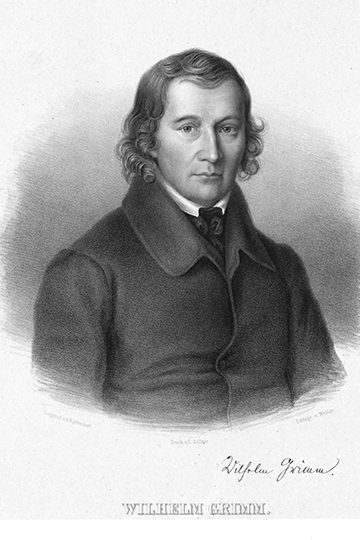
Wilhelm Grimm
Wilhelm Carl Grimm (also Karl 24 February 1786 – 16 December 1859) was a German author and anthropologist, and the younger brother of Jacob Grimm, of the literary duo the Brothers Grimm. Wilhelm was born in Hanau, in Hesse-Kassel. In 1803, he started studying law at the University of Marburg, one year after his brother Jacob started there. The two brothers spent their entire lives close together. In their school days, they had one bed and one table in common, as students, they had two beds and two tables in the same room. They always lived under one roof and had their books and property in common.In 1825, 39-year-old Wilhelm married pharmacist's daughter Henriette Dorothea Wild, also known as Dortchen. Wilhelm's marriage did not change the harmony of the brothers. Richard Cleasby visited the brothers and observed, "they both live in the same house, and in such harmony and community that one might almost imagine the children were common property,Wilhelm's character was a complete contrast to that of his brother. As a boy, he was strong and healthy, but while growing up he suffered a long and severe illness which left him weak the rest of his life. He had a less comprehensive and energetic mind than his brother, and he had less of the spirit of investigation, preferring to confine himself to some limited and definitely bounded field of work. He utilized everything that bore directly on his own studies and ignored the rest. These studies were almost always of a literary nature. Wilhelm took great delight in music, for which his brother had but a moderate liking, and he had a remarkable gift of story-telling. Cleasby relates that "Wilhelm read a sort of farce written in the Frankfort dialect, depicting the 'malheurs' of a rich Frankfort tradesman on a holiday jaunt on Sunday. It was very droll, and he read it admirably." Cleasby describes him as "an uncommonly animated, jovial fellow." He was, accordingly, much sought in society, which he frequented much more than his brother.A collection of fairy tales was first published in 1812 by the Grimm brothers, known in English as Grimms' Fairy Tales.From 1837 to 1841, the Grimm brothers joined five of their colleague professors at the University of Göttingen to form a group known as the Göttinger Sieben (The Göttingen Seven). They protested against Ernest Augustus, King of Hanover, whom they accused of violating the constitution. All seven were fired by the king.Wilhelm Grimm died in Berlin of an infection at the age of 73 in December 16, 1859.
-
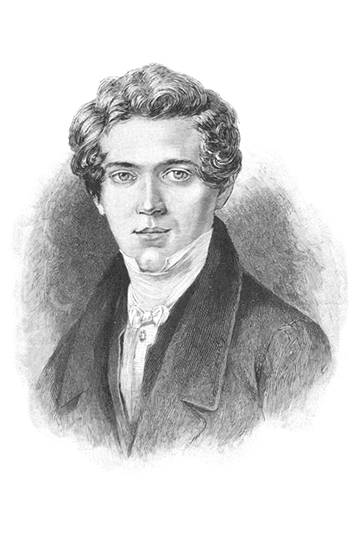
Wilhelm Hauff
Hauff was born in Stuttgart, the son of August Friedrich Hauff, a secretary in the Württemberg ministry of foreign affairs, and Hedwig Wilhelmine Elsaesser Hauff. He was the second of four children.Young Hauff lost his father when he was seven years old, and his early education was practically self-gained in the library of his maternal grandfather at Tübingen, where his mother had moved after the death of her husband. In 1818 he was sent to the Klosterschule at Blaubeuren, and in 1820 began to study at the University of Tübingen. In four years he completed his philosophical and theological studies at the Tübinger Stift. On leaving the university, Hauff became tutor to the children of the Württemberg minister of war, General Baron Ernst Eugen von Hugel (1774–1849), and for them wrote his Märchen (fairy tales), which he published in his Märchen almanach auf das Jahr 1826 (Fairytale Almanac of 1826). Some of these stories are very popular in German-speaking countries to this day, such as Der kleine Muck (The Story of Little Muck), Kalif Storch (Caliph Stork) and Die Geschichte von dem Gespensterschiff (The Tale of the Ghost Ship)—all set in the Orient—as well as Der Zwerg Nase (Little Longnose), Das kalte Herz (The Cold Heart or The Marble Heart) and Das Wirtshaus im Spessart (The Spessart Inn), set in Germany.
-

Wilkie Collins
William Wilkie Collins (8 January 1824 – 23 September 1889) was an English novelist and playwright known for The Woman in White (1859) and The Moonstone (1868). The last has been called the first modern English detective novel. Born to a London painter, William Collins, and his wife, the family moved to Italy when Collins was twelve, living there and in France for two years, so that he learned Italian and French. He worked at first as a tea merchant. On publishing his first novel, Antonina, in 1850, Collins met Charles Dickens, who became a friend and mentor. Some Collins works appeared first in Dickens's journals Household Words and All the Year Round. The two also collaborated on drama and fiction. Collins reached financial stability and an international following in the 1860s from his best-known works, but began to suffer from gout. He took opium for the pain, but became addicted to it. His health and his writing quality declined in the 1870s and 1880s. Collins was critical of the institution of marriage: he later split his time between widow Caroline Graves, with whom he had lived most of his adult life, treating her daughter as his, and the younger Martha Rudd, by whom he had three children.
-
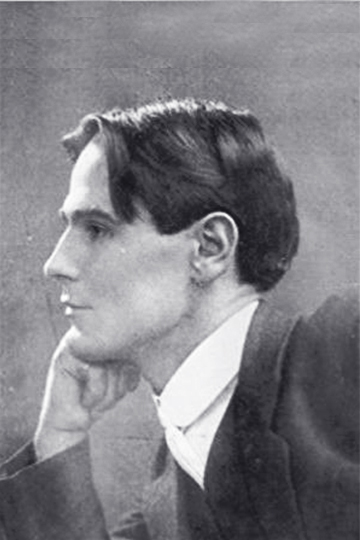
William Hope Hodgson
William Hope Hodgson (15 November 1877 – 19 April 1918) was an English author. He produced a large body of work, consisting of essays, short fiction, and novels, spanning several overlapping genres including horror, fantastic fiction, and science fiction. Hodgson used his experiences at sea to lend authentic detail to his short horror stories, many of which are set on the ocean, including his series of linked tales forming the "Sargasso Sea Stories". His novels, such as The House on the Borderland (1908) and The Night Land (1912), feature more cosmic themes, but several of his novels also focus on horrors associated with the sea. Early in his writing career Hodgson dedicated effort to poetry, although few of his poems were published during his lifetime. He also attracted some notice as a photographer and achieved renown as a bodybuilder. He died in World War I at age 40.
-
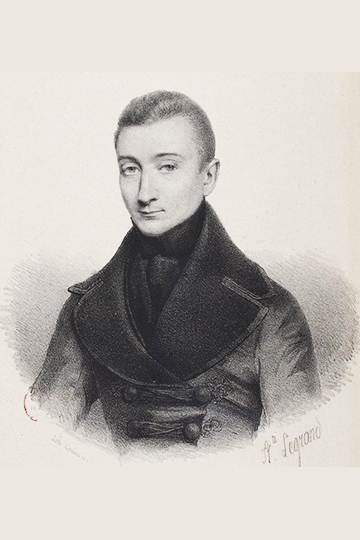
Xavier Forneret
Xavier Forneret (16 September 1809 in Beaune, Côte-d'Or – 7 August 1884) was a French writer, poet, playwright and journalist. Born in 1809 bourgeois family by the name Antoine Charles Ferdinand, he was one of the few members of the Romantic movement who never experienced poverty and could afford to publish his books himself. In his hometown, he became an advocate of the new art. Between 1837 and 1840 he lived in Paris. In 1835 he wrote two plays which were staged in Dijon. He paid for the staging, both were total commercial failures. During his years in Paris, he published books (with the text usually printed on one side of the paper only, in an enormously large font) which included poems, aphorisms, paradoxes, short prosaic pieces and maxims. He also published several short stories.
-
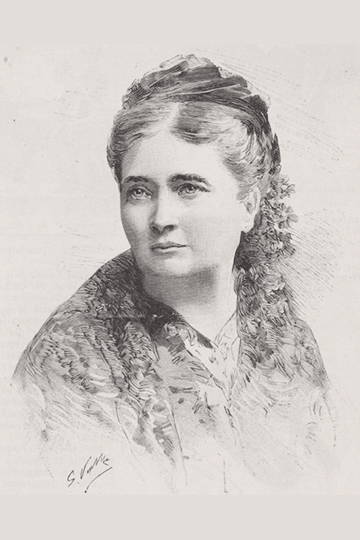
Zénaïde Fleuriot
Zénaïde-Marie-Anne Fleuriot (28 October 1829 – 19 December 1890), was a French novelist. She wrote eighty three novels, all aimed at young women, most of which were published in the series Bibliothèque rose and Bibliothèque bleue. Her writings were initially published under the pseudonym Anna Edianez, Edianez being an anagram of Zénaïde and Anna being derived from one of her own given names, Anne. She also wrote under the names Anna Edianez de Saint-B. and Anna Edianez de L.
-
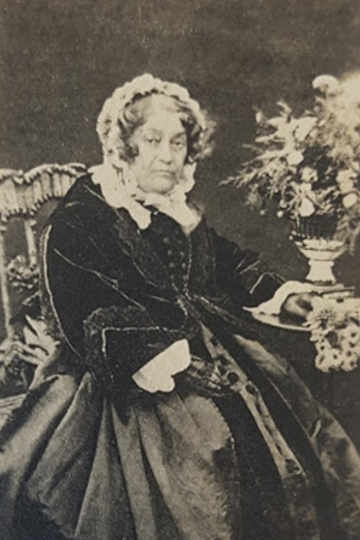
Zulma Carraud
Zulma Carraud (24 March 1796 – 24 April 1889) was a French author. She is best known for her children's books and textbooks particularly La Petite Jeanne ou le devoir and Maurice ou le travail. After moving to Nohant, Carraud volunteered as a country doctor and as a teacher at a rural school from 1852 until 1868. She began writing books and textbooks for children in rural areas after struggling to get proper books while she was a teacher. She wrote books aimed specifically at children from peasant families and their parents and was one of the first children's authors to focus on main characters that were not from noble, bourgeois or working-class families.Her first book, La Petite Jeanne ou le devoir was published in 1852.